Understanding the Costs of Alaskan Husky Puppies
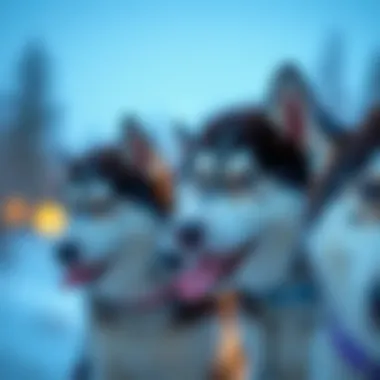
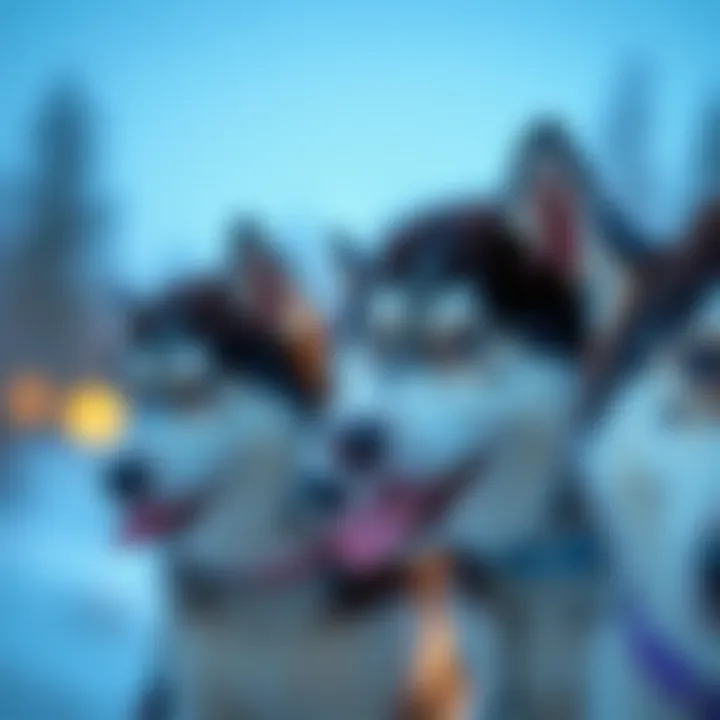
Intro
Welcoming a new Alaskan Husky puppy into your life is more than just a heartwarming experience; it’s also a significant financial commitment. Many prospective owners might find themselves starry-eyed at the thought of a playful pup bounding through the snow. However, it’s crucial to understand the true costs involved. This article dives deep into various financial aspects to help you make informed decisions. From initial expenses like purchase price to ongoing costs like health care and training, we cover it all.
Making sure you are aware of these costs aids you in planning adequately and helps ensure a happy life for your future furry companion. Let’s start by delving into the first major area: Pet Care and Grooming.
Pet Care and Grooming
Importance of Regular Care
One cannot overstate how essential regular pet care is for a healthy and happy pup. Alaskan Huskies, with their beautiful coats, require consistent grooming to stay in top condition. Neglecting their grooming can lead to matting, skin issues, and overall discomfort. It’s not just about looks; it’s about keeping your dog physically comfortable and socially happy.
Grooming Techniques by Pet Type
Huskies come with a double coat, which means they shed significantly, especially during seasonal changes. Here are some grooming techniques that can work wonders:
- Brushing: Use a slicker brush at least once a week. During shedding season, consider daily brushing to manage the fur explosion.
- Bathing: Only bathe your Husky when necessary, as over-bathing can strip the natural oils from their coat. Use a gentle, pet-approved shampoo when you do.
- Nail Trimming: Regular nail trimming is essential, not just for aesthetics, but to avoid any painful splits or breaks.
Tools and Products Recommendations
Investing in the right tools can make all the difference. Here are some recommendations for optimal grooming:
- Slicker Brush: Perfect for removing loose hair.
- De-shedding Tool: Consider a FURminator for those heavy shedding periods.
- Pet Nail Clippers: A safety-first option is the scissor-type clippers which offer precision.
Seasonal Care Tips
Winter and summer pose unique challenges for your Alaskan Husky’s care. In colder months, ensure they are not exposed to excessively low temperatures for too long, even though they thrive in such conditions. In hotter months, keep an eye out for heat stress; proper hydration and shaded areas are vital.
Health and Nutrition
Understanding Pet Nutrition
What goes into your puppy’s bowl is crucial for their growth and overall well-being. A balanced diet appropriate for the Husky breed will make a world of difference. Look for high-quality dog food with proper protein sources and limited fillers.
Common Health Issues by Species
Being informed about potential health issues can prepare you for the unexpected:
- Hip Dysplasia: A common issue with larger breeds, this condition affects mobility and causes discomfort. Regular vet check-ups can identify early signs.
- Eye Conditions: Huskies can face conditions like cataracts or progressive retinal atrophy.
Preventive Care and Regular Check-Ups
Annual vet visits are essential. They help to catch any health indications before they escalate. Vaccinations, dental cleanings, and parasite control are often covered under preventive care plans. It might cost more upfront, but will save you a lot in future vet bills.
Food and Dietary Advice
For puppies, quality puppy food rich in protein and healthy fats is ideal. Research the best brands that meet AAFCO guidelines. As they transition to adult food, keep a close watch on their weight and adjust portions accordingly.
Behavioral Training
Basics of Positive Reinforcement
Establishing training routines is crucial for your pup's behavior. Positive reinforcement, such as treats and praise, works wonders in shaping good habits.
Training Techniques Users Can Apply
Basic commands such as sit, stay, and come can be instilled in puppies with consistency and patience. Utilize short training sessions to maintain focus.
Managing Behavioral Issues
Address common behavioral issues like chewing or barking with constructive solutions rather than punishment. Redirect unwanted behaviors and reward positive interactions.
Importance of Socialization
Exposing your puppy to different environments and other dogs helps them become well-adjusted adults. Try puppy playgroups or organized social outings to flourish their social skills.
Engaging Activities and Enrichment
Fun Games to Play with Your Pet
Keep your pup stimulated both physically and mentally with engaging games. Tug-of-war, fetch, or hide and seek with their favorite toys can be fun for both pet and owner.
DIY Toys and Activities
You don’t have to break the bank to keep your Husky entertained. A simple cardboard box filled with shredded paper can provide hours of amusement.
Importance of Mental Stimulation
Huskies are intelligent and require mental challenges to stay sharp. Consider puzzle toys or interactive feeders that make them think and work for their treats.
Outdoor Adventures and Exploration
Huskies love the outdoors, so plan regular outings that let them exercise and explore new smells. Trails in the wilderness or dog parks can offer ample opportunities.
Resources and Community Engagement
Recommended Books and Websites
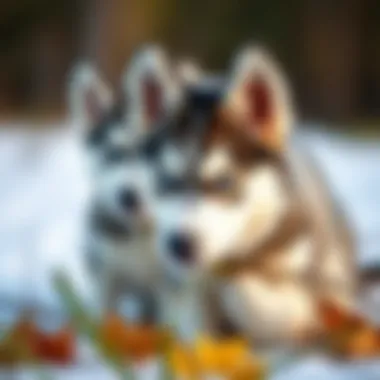
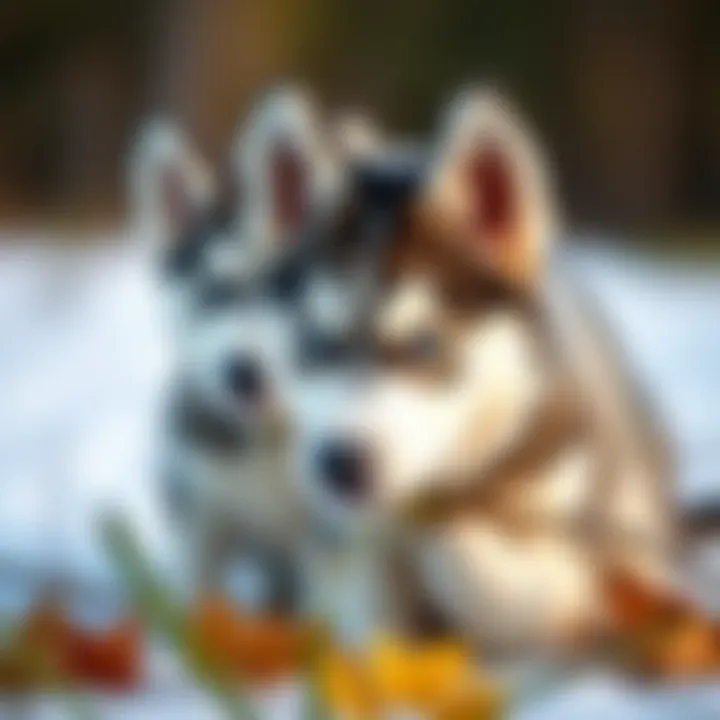
Educating yourself about Alaskan Huskies is paramount. Look into websites like official breed clubs or community forums for shared experience.
Forums and Groups for Pet Owners
Sites like Reddit or Facebook have various groups where owners exchange tips, share experiences, and offer advice on pups. Search for Alaskan Husky adoption or training groups.
Finding Local Services and Classes
Local pet stores and training facilities often host classes specifically designed for training or socialization. Don’t hesitate to use Google to find their offerings.
Encouraging Community Sharing and Contributions
Encouraging open discussions about pet care in your community can promote better practices and camaraderie among pet owners. How about starting a local Dog Owners Club?
To sum up, owning an Alaskan Husky is more than just signing the adoption papers; it’s a commitment that spans their entire life—financial or emotional. Equip yourself with knowledge, ask the right questions, and get ready for a rewarding journey.
For more information, consider visiting resources like Wikipedia, Britannica, or joining active community discussions on platforms like Reddit.
Intro to Alaskan Huskies
When considering the addition of a four-legged friend to your home, understanding the specific breed is crucial. Alaskan Huskies are not just beloved for their striking appearance; they possess a unique blend of qualities that can make them a wonderful addition to the right family. This section lays the groundwork for prospective owners by shedding light on both the charm and challenges of welcoming an Alaskan Husky into one’s life.
Understanding the Breed
Alaskan Huskies have a storied history, often associated with sledding and the harsh Arctic, which roots much of their temperament and behaviors. This breed, developed primarily for working, showcases a distinctive blend of endurance, speed, and intelligence. Unlike purebred dogs that may be bred to meet a specific standard, Alaskan Huskies are a hybrid breed, often featuring various bloodlines that contribute to their unique characteristics.
Their capacity for physical activity is like no other. Daily exercise is non-negotiable, whether it involves long runs or engaging in fetch at a local park. If you are more of a couch potato, an Alaskan Husky might not be the best match for you. They thrive in active environments and can become bored and destructive without it.
Furthermore, the temperament of Alaskan Huskies leans towards friendly but independent, meaning they might not always come when called—a challenge for homes with less experienced owners. Understanding their pack mentality is key; they excel when they feel part of a family unit. Alaskan Huskies enjoy companionship, not just from humans but also from other dogs, making socialization part of preparation for bringing them home.
Alaskan Husky Characteristics
Alaskan Huskies are a fascinating mix of different traits that embody the spirit of the north. Here are a few key characteristics:
- Physical Attributes: Their striking appearance includes a thick double coat, erect triangular ears, and expressive eyes that can range from blue to brown. This furry coat not only adds to their aesthetic appeal but also serves as protection against harsh weather conditions.
- Temperament: Generally sociable and eager to please, they display a friendly disposition towards both humans and other dogs. However, their independent streak can lead to stubbornness, so consistent and engaging training is essential.
- Energy Levels: As mentioned, these pups are full of energy. Their need for physical activity and mental stimulation means they require daily exercises like runs or agility training. They are not suitable for apartment living unless you can provide ample exercise time.
- Trainability: Alaskan Huskies learn quickly but need a firm and patient owner to guide them. Positive reinforcement works best, as they respond to kindness over harsh training methods.
Understanding these traits allows prospective owners to gauge whether their lifestyle aligns with what these dogs need.
In summary, getting acquainted with the Alaskan Husky breed is more than just looking at pictures or reading reviews. It's about understanding their heritage, their energy, and the responsibility that comes with their ownership. Familiarizing yourself with what to expect will serve you and your future companion well, leading to a lasting relationship built on trust and understanding. For more information on the Alaskan Husky, resources such as Wikipedia provide detailed insights into their history and breed dynamics.
Factors Influencing Pricing
Choosing to welcome an Alaskan Husky into your home is an exciting step. However, understanding the various elements that influence their pricing is crucial in making an informed decision. Each factor can significantly impact the initial cost and ongoing expenses. When prospective dog owners consider these pricing factors, they better grasp the true financial commitment involved.
Breeder Reputation
One of the most pivotal aspects influencing the cost of Alaskan Husky puppies is the reputation of the breeder. A breeder with a solid reputation is likely to charge more because they invest time and resources into ensuring the health and quality of their dogs. Reputable breeders often engage in responsible breeding practices, provide health clearances, and invest in proper nutrition and socialization for their puppies.
When puppies come from a well-regarded breeder, potential owners can have greater confidence regarding the health and temperament of their new pet. However, it's essential to vet the breeder thoroughly. Asking questions about their breeding practices, requesting references, and visiting their facilities can help confirm their credibility. In some cases, the added premium for a reputable breeder allows for a smoother transition to puppy parenthood, reducing future veterinary bills due to health issues.
Geographic Location
Another significant factor impacting Alaskan Husky pricing is geographical location. Prices can vary dramatically from one region to another. For instance, puppies in areas with a high demand for Alaskan Huskies, like cities or suburban settings, may carry a premium compared to those available in rural locales. Additionally, local regulations, climate, and cultural preferences play a role. Certain communities may prioritize specific breeds and showcase them through breeders, which drives prices higher.
Transportation costs also come into play when bringing a puppy home. If you purchase from a breeder farther away, you might incur travel expenses not initially factored into the puppy's price. When considering geographic location, it’s wise to compare the overall costs, including any travel needs, to fully understand the financial implications of your choice.
Bloodline and Pedigree
The bloodline and pedigree of Alaskan Husky puppies are crucial elements that sway their pricing. Dogs with champion bloodlines or those bred for specific traits often command higher prices. For instance, if a puppy's lineage includes successful racing or show dogs, you can expect to pay a premium. These bloodlines not only reflect quality but also potential performance traits beneficial for activities like sledding or agility.
Moreover, keep in mind that with a prestigious pedigree comes higher expectations for training and care. Puppies with extensive lineage may require experienced owners who understand their needs. On the other hand, mixed-breed Alaskan Huskies, often called "Alaskan Mixes", may be more affordable yet still possess the breed's charming characteristics. Ultimately, potential owners should weigh the added costs against their expectations and circumstances, ensuring that the puppy’s lineage aligns with their lifestyle and budget.
"An informed owner is a responsible owner; understanding pricing factors leads to better decisions."
Factors such as breeder reputation, geographic location, and bloodline significantly shape the cost of Alaskan Husky puppies. By delving into these aspects, you can approach your purchase armed with knowledge and make choices that resonate with your financial reality.
Initial Costs of Alaskan Husky Puppies
When considering welcoming an Alaskan Husky into your life, it’s crucial to understand the initial costs associated with bringing home one of these spirited puppies. These costs form the foundation of your pet ownership journey and pave the way for the responsibilities that lie ahead. By getting a clear grasp of these expenses, you can strategize your budget and ensure that you’re prepared for the long-haul commitment of pet ownership.
Purchase Price
The purchase price is often the most tangible cost when acquiring an Alaskan Husky puppy. This amount can significantly vary depending on the breeder’s reputation, the puppy’s lineage, and geographic factors. On average, you can expect to pay anywhere from $750 to $2,000 for a puppy, but prices can leap higher for show-quality dogs or those with champion bloodlines.
Factors that influence the purchase price include:
- Breeder Quality: A reputable breeder who cares about their dog's health and well-being tends to charge more. They often conduct health checks and provide warranties.
- Location: Puppies may cost more in metropolitan areas than in rural regions due to demand and living costs.
- Pedigree: Puppies with champion ancestors or unique traits might come at a premium.
Ultimately, it is wise to approach this investment with a sense of diligence: meeting the breeder, visiting the pup’s environment, and getting health clearances can offer valuable insights into the purchase.
Transportation Fees
Once you’ve decided on your Alaskan Husky puppy, transportation fees become a key aspect in the cost consideration process. Whether you're picking your puppy up locally or arranging for shipping from a breeder hundreds of miles away, these costs can add up quickly.
If you’re driving, consider fuel prices, potential lodging, and meals along the route. On the other hand, if you opt for air travel, check the airline's pet policy, as most airlines charge anywhere from $125 to $500 to transport pets.
Don't forget to factor in costs for:
- Crates: If you need a crate for air travel, this can be another added cost. A good crate can be $50 to $200.
- Travel Vaccinations: Sometimes, airlines require pets to have certain vaccinations, adding another layer to your expenses.


It’s not just about the ticket price; consider the overall transportation logistics when finalizing your budget. Transporting a puppy is more than moving an asset – it’s about ensuring the little one’s comfort and safety during their journey to you.
In summary, understanding these initial costs can prevent any unwelcome surprises. A well-planned financial approach will help you enjoy your time with your new furry friend rather than stressing over unforeseen expenses.
Ongoing Costs After Purchase
When welcoming an Alaskan Husky into your home, the initial cost is just the tip of the iceberg. It's crucial to understand that the expenses associated with dog ownership extend far beyond the purchase price. The ongoing costs can significantly impact a household's budget. This part of the article delves into the continuous investments that prospective Husky owners should anticipate, offering valuable insights into how to manage these financial commitments successfully.
Food and Nutrition
Feeding an Alaskan Husky is not a trivial matter; after all, a well-nourished dog is a happy one. Huskies have unique dietary needs that stem from their active nature and genetic background. A high-quality dog food rich in protein, like chicken or salmon-based formulas, is preferable. You might find that premium brands, such as Orijen or Blue Buffalo, are a bit pricier but can offer better health benefits in the long run.
Here are a few factors to keep in mind regarding food expenses for your new companion:
- Daily Feeding: Huskies typically require two meals a day, each ranging from 1 to 1.5 cups of kibble, depending on their age, weight, and activity level.
- Supplementary Treats: Don’t forget how important treats can be for training. Calculating the cost of these can add up over time.
- Diverse Diet: Some owners opt to mix in fresh fruits, vegetables, or raw meat to round out the diet, adding to the grocery bill.
For an average monthly food expense, you might be looking at anywhere from $50 to $100, but this can vary significantly based on the quality of the food you choose.
Routine Veterinary Care
Regular vet visits form a cornerstone of your Husky's health. Just like any furry family member, they are vulnerable to various health issues, and preventive care is key. Here’s what you need to account for:
- Annual Check-ups: These are necessary for vaccinations, examinations, and general health monitoring. An annual vet visit could cost between $50 to $200.
- Preventive Medicines: Treatments for fleas, ticks, heartworm, and other ailments can add another layer to your budget. Expect to spend around $200 to $300 annually, depending on your treatment choices.
- Spaying/Neutering: If not already done, this may be needed soon after adoption, typically costing between $150 and $300.
The health of your Alaskan Husky is a lifelong commitment. Regular investments in veterinary care can prevent hefty expenses later on.
Training and Socialization
An Alaskan Husky is as bright as a button but can also be a bit stubborn. Training and socialization are crucial for shaping their behavior and ensuring they fit well into the family dynamic. When considering these ongoing expenses, think about the following:
- Basic Training Classes: Group classes in obedience can range from $100 to $300, depending on the location and instructor qualifications. This helps not only in basic commands but also in your dog’s social skills.
- Advanced Training or Specialty Classes: If you’re considering advanced training, be prepared for additional expenses ranging from $150 to $500, particularly for practices like agility or therapy dog training.
- Socialization Opportunities: Engaging your Husky in dog parks or playgroups is essential. Although free, there may be costs associated like travel and pet accessories.
Being proactive in training not only results in a well-behaved dog but can also prevent behavior-related issues that might require professional help later on, which can be quite costly.
Understanding the ongoing costs of food, veterinary care, and training is vital for prospective owners considering how many resources they are willing to invest over the lifetime of an Alaskan Husky. Managing these expenses smartly fosters a happier and healthier life for your furry friend.
Health Considerations and Expenses
When it comes to adding an Alaskan Husky to your family, understanding health considerations and expenses is essential. These furry companions, known for their strength and endurance, come with specific health requirements that potential owners must keep in mind. Being aware of these can help anticipate both immediate and long-term costs, ensuring a healthier and happier life for your pup.
"Let’s face it: a few thousand dollars is a small price to pay for the joy that an Alaskan Husky brings, but you gotta be prepared for the vet bills that come with it."
Common Health Issues in Alaskan Huskies
Every breed has its quirks, and the Alaskan Husky is no different. Certain health issues are more prevalent within this breed, and understanding these can drastically influence your budget.
- Hip Dysplasia: This genetic condition affects many large breeds, and Huskies are no exception. A dog with this condition may require medication and, in severe cases, surgery.
- Eye Problems: Huskies are prone to various ocular issues like cataracts or progressive retinal atrophy. Regular eye check-ups with a veterinarian will keep you informed and may even lead to early intervention.
- Skin Conditions: Allergies and dermatitis can frequently affect Huskies. Keeping an eye on their diet and environment can help mitigate these problems, but sometimes medication is necessary to soothe their itchy skin.
- Hypothyroidism: This condition is associated with hormonal imbalance and can lead to weight gain and lethargy. Regular vet visits are crucial to test for thyroid levels and adjust treatments as needed.
Recognizing the signs of these health issues early on can save you heaps of money in the long run and ensure your Husky stays in tip-top shape.
Emergency Medical Expenses
All pet ownership comes with its share of surprises, but Huskies can be particularly adventurous. Their energetic nature means they could wind up injured or need emergency care at any moment. Here are some considerations that can guide your budgeting for those unexpected vet visits:
- Accidents: Huskies are lively and love to explore. This can lead to accidents that may require immediate medical attention. Broken bones or cuts from rough play can result in unexpected vet bills.
- Ingestion of Foreign Objects: These clever pups can get into all sorts of mischief. If they swallow something they shouldn't, emergency surgery may become necessary. This could easily run into the hundreds, if not thousands, of dollars.
- Unforeseen Illness: Like humans, dogs can develop sudden illnesses requiring emergency treatment. The cost can escalate quickly, especially if hospitalization or specialized care is needed.
Being part of a community, like those on reddit.com/r/alaskanhusky, can provide valuable insights and support when navigating these challenges. Knowing that others have faced similar issues can ease the burden and assist in finding cost-effective solutions.
In summary, factoring in health considerations and their associated expenses is crucial when you decide to welcome an Alaskan Husky into your home. The investment in their wellbeing often translates to a more rewarding relationship with your furry friend.
Grooming and Maintenance Costs
Understanding grooming and maintenance costs plays a vital role in the overall financial picture for new Alaskan Husky owners. These costs can often be overlooked but are crucial to the wellbeing of your furry companion. Proper grooming helps in maintaining a healthy coat, which in turn reduces the chances of skin issues and mats. Moreover, consistent grooming allows you to check for any abnormalities that might require veterinary attention. It’s simple, really—grooming is not just about aesthetics; it's about the health and happiness of your pup.
Basic Grooming Needs
Alaskan Huskies possess dense double coats that shed significantly, particularly during seasonal changes. Thus, any owner should be prepared for ongoing maintenance. Regular brushing is essential to keep their fur in good condition. Generally, here are the basic grooming needs to consider:
- Brushing Frequency: Aim for at least two to three times a week, ramping up to daily during shedding seasons to keep your home free of fur tumbleweeds.
- Bathing: Huskies don’t require frequent baths. A bath every couple of months, or when they roll in something smelly, is usually sufficient. Over-bathing can strip essential oils from their skin.
- Nail Trimming: Nail care is crucial; long nails can affect their healthy gait. Check and trim nails every four to six weeks.
- Ear Cleaning: Routine checks for wax buildup and dirt can prevent ear infections. This should be done as part of their grooming routine.
Typically, these expenses can be a do-it-yourself affair, but buying the right grooming tools—brushes, nail clippers, and shampoo—can amount to anywhere between fifty to a couple of hundred dollars initially, depending on the quality of the products you select.
Professional Grooming Services
While many owners prefer the DIY route for grooming, hiring a professional might be the way to go, especially if you are uncertain about handling a thick coat. Professional grooming services can come with different price tags depending on various aspects:
- Service Price Range: A single grooming session can set you back $50 to $100, depending on factors like your geographic location and the groomer’s experience.
- Types of Services Offered: Services can include bathing, drying, brushing, nail clipping, even minor health checks. Some groomers offer package deals that are more cost-effective in the long run.
- Frequency of Visits: Depending on your schedule and comfort level with at-home grooming, you might want to consider visiting a professional every three to six months. This way you tackle the harder grooming tasks while you keep up with regular at-home maintenance in between.
For those who opt to take their pups to a groomer, it's beneficial to research local providers and read reviews. Also consider that grooming can be a bonding experience for dogs who feel at ease with their human or a professional that understands their needs.
Grooming your Alaskan Husky is not just a luxury or a vanity project; it’s a fundamental aspect to ensure their happiness and health.
Overall, when calculating your budget for an Alaskan Husky, don’t forget to put aside a little cash for regular grooming and maintenance. The investment in proper tools and services pays dividends in both health benefits and your dog's overall quality of life.
Cost Variability Across Regions
When grappling with the prospect of adding an Alaskan Husky to your household, understanding the cost variability across different regions is paramount. The price of a puppy doesn't swing solely based on the puppy itself. Instead, it dances to the tune of the environment—both economic and cultural—that surrounds it. This section delves into vital elements that influence cost differences, providing clarity for prospective owners.
Urban vs Rural Pricing
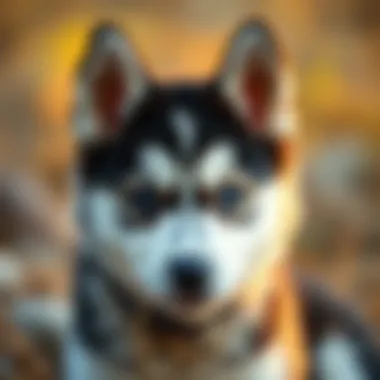

In urban areas, the demand for Alaskan Huskies can be quite a bit higher. This spike in demand often leads to increased prices. Breeders in cities, for instance, might charge extra because, well, they know folks are willing to pay more in densely populated areas. Shopping for a puppy in a bustling city like Seattle, with its endless coffee shops and outdoor spaces, could lead to prices that are noticeably inflated compared to rural locales.
On the flip side, rural regions might present a jackpot of savings on puppy costs. If you’re in a small town where nature trails replace high-rise buildings, breeders might charge less because the demand is relatively lower. Additionally, being in a rural area may also offer greater opportunities to adopt from local shelters, where adoption fees often come at a fraction of the price, making it easier on the wallet.
In many cases, the cost of living in cities skews, too. Higher overhead for breeders translates into pricier puppies in urban settings. Factors like real estate costs, operational expenses, and even local regulations add up. Thus, if you’re calculating your budget, keep in mind the broader economic picture that surrounds your location.
Comparative Costs in Different States
Things can take an interesting turn when you look at the comparative costs of Alaskan Husky puppies across various states. A husky might set you back $1,000 in one state, while in another, the price can soar past $2,000. This variation isn’t just random—it's influenced by state-specific laws, breeder practices, and even geographical reputation.
For instance, states with stricter regulations on animal breeding might see breeders charging higher due to the compliance costs they must shoulder. Conversely, states with fewer regulations may offer more competitive pricing, albeit sometimes at the risk of compromising quality.
Here are some points to consider:
- Cost of Breeding Programs: States renowned for their breeding programs might have a standard price increase due to perceived superior quality.
- Travel Expenses: If you're eyeing a puppy in a distant state, consider factoring in travel costs—even though the initial puppy fee may look appealing, additional expenses can add up.
- Market Demand Fluctuations: In states where Alaskan Huskies are a popular choice, prices can be on the higher side during peak seasons, further necessitating timely research and decisions.
A quote from an industry expert can sum up the reality:
“Where you buy your pup can often shape not just the cost, but the overall experience you’ll have as a new owner.”
Understanding that regional variability can make or break your budget is crucial. As you dive deeper into this decision, keep a keen eye on the landscape, prices, and local practices to ensure you're making a well-informed investment.
For more insights on purchasing pets across locations, you can refer to resources like Wikipedia for more detailed readings about this captivating breed.
Long-Term Financial Commitment
Adding an Alaskan Husky to your family is not just a one-time purchase; it comes with a financial commitment that spans many years. This breed, known for their energy and loyalty, can live well into their teens if cared for properly. Thus, understanding the long-term financial commitment is essential for any prospective dog owner. This section will dive into the lifetime care expenses and budgeting for unexpected costs related to keeping an Alaskan Husky.
Lifetime Care Expenses
When considering the cost of owning an Alaskan Husky, you have to look beyond the initial purchase price. The lifetime care expenses can accumulate quite quickly and include various factors:
- Food: Huskies are active dogs. They typically require a high-quality diet to maintain their energy levels and overall health. Expect to spend between $50 to $100 a month on dog food.
- Veterinary Care: Routine vet visits for vaccinations, check-ups, and preventive care can add up. Annual vet costs can range from $300 to $500, not including any emergencies or medical issues that may arise.
- Training and Socialization: It's crucial, especially for this breed known for its strong will. Budget around $150 to $400 for basic training courses or socialization activities.
- Grooming: Huskies have a thick double coat that sheds, requiring regular grooming. While basic grooming can be done at home, professional grooming might set you back approximately $50 to $100 every few months.
- Supplies: Don’t forget about supplies like collars, leashes, bedding, toys, and any potential kennel expense. These one-off or periodic costs can add another $200 to $500 a year.
Overall, the cumulative costs can easily amount to $1,500 to $2,000 annually for a well-rounded and healthy life for your Alaskan Husky. Planning for these enduring expenses from the get-go ensures you can provide the best care for your furry friend.
Budgeting for Unexpected Costs
Life is full of surprises, and owning a pet is no different. While some expenses are predictable, others can catch you off guard. It's wise to set aside a budget for unexpected costs that may pop up over time:
- Emergency Vet Visits: Sometimes, mishaps occur that require immediate attention, which can lead to significant veterinary bills. It's not uncommon for emergency visits to range from $200 to more than $1,000, depending upon the situation.
- Chronic Health Issues: Some Alaskan Huskies can be prone to health issues such as hip dysplasia or certain eye disorders. Budgeting for potential surgery or ongoing treatment is critical in managing these costs.
- Accidental Damages: Whether it’s a chewed-up pair of shoes or a hotel bill for unexpected dog-sitting needs, accidents happen. Having a cushion of around $300 to $500 per year can help account for these unforeseen expenses.
As you navigate the financial commitments of owning an Alaskan Husky, it remains essential to not only anticipate predictable costs but also have a safety net in place for the curveballs that life may throw your way.
"It’s not just a matter of having enough money; it’s about making the right choices to ensure your dog lives a healthy and fulfilling life."
By understanding these long-term financial obligations, prospective owners can better prepare themselves for the enriching yet demanding experience of having an Alaskan Husky in their lives.
Rescue Organizations and Adoption Fees
When considering adding an Alaskan Husky to your family, it’s vital to look beyond just the purchase price. Many people might overlook the benefits of adopting a dog from rescue organizations. This section sheds light on the nuances of rescue organizations and adoption fees, accountable for providing not only a second chance to dogs in need but also saving prospective owners money and time in the long run.
Understanding Adoption Costs
Adoption costs can vary significantly among different rescue organizations. Generally, the fee for adopting an Alaskan Husky ranges from $150 to $300. This fee often encompasses several critical elements:
- Vaccinations: Most adoptable dogs have received necessary vaccinations, giving you a head start on your puppy's health needs.
- Spay/Neuter Fees: Adoption costs frequently include spaying or neutering, which is important for controlling the pet population.
- Microchipping: Many organizations microchip dogs, enhancing safety and ensuring you have peace of mind if they wander off.
In some cases, fees might be higher if the dog comes from a specialty rescue. These funds help cover the costs of medical treatments for pets that require special care. While a purchase from a breeder might seem appealing, the long-term benefits and cost savings from adopting can be quite significant.
Benefits of Adopting versus Buying
Adopting a dog, especially an Alaskan Husky, has multiple advantages over purchasing one from a breeder:
- Cost Savings: Depending on the breeder, buying a puppy can cost anywhere between $600 to $1,500. Choosing to adopt can alleviate initial financial burdens.
- Supporting Animal Welfare: By adopting, you are supporting rescue organizations that work tirelessly to save abandoned and abused animals. It fosters a culture of kindness toward animals in need.
- Access to Trained Dogs: Many rescues work on training their dogs, which can mean less effort for you when it comes to integrating your new pet into your household. Some organizations even provide nuanced training or behavioral assessments to match you with the right dog.
- Health and Well-being Checks: Most rescue organizations assess the health of their dogs before placing them for adoption. This can save you from unexpected veterinary costs down the line.
"Adopting a dog is not just about saving money; it’s about building a life-long bond with a dog that needs a loving home."
While adopting a Husky may involve its own set of challenges, such as adjusting to behavioral traits specific to the breed, it can be overwhelmingly rewarding. The sense of fulfillment that comes from providing a home to a dog in need is unmatched. If you’re still contemplating, consider visiting your local shelters and connect with the dogs waiting for their forever homes.
For more information on adopting, visit: Petfinder and check your local animal shelters.
Finale
When considering bringing an Alaskan Husky into your home, it’s not just about the initial purchase price; it’s about understanding the total cost of ownership. Many prospective dog owners may not fully grasp the financial commitment involved. From the outset, adopting or purchasing one of these majestic pups involves several factors that can influence the total cost.
Summary of Financial Considerations
- Initial Costs: This includes the purchase or adoption fee, which can vary widely. You might find prices ranging from a few hundred to several thousand dollars based on breed, pedigree, and breeder reputation.
- Ongoing Care Costs: Once you secure your furry friend, the expenses keep rolling in. Basic care such as food and regular veterinary check-ups won't be cheap, especially for a breed known for its active lifestyle.
- Training and Socialization: These aspects are essential to develop a well-adjusted member of your family. Training classes can add significant cost but are necessary for a successful long-term relationship with your Husky.
- Unexpected Expenses: Dogs have their share of surprises. Unforeseen medical problems or additional training needs can pop up, which takes away from your budget. Setting aside an emergency fund is wise.
- Lifetime Commitment: Owning a dog is a long-term financial journey. Over the years, your Husky will require food, medical attention, and other essentials. It’s not a one-time investment; it's about budgeting for a lifetime.
Understanging these costs provides a clearer picture of your responsibilities towards an Alaskan Husky. The financial implications can be hefty, yes, but the rewards of owning a loyal and loving companion are well worth it. By grasping these factors, prospective owners can better prepare for the responsibilities of pet ownership.
Making Informed Decisions
Deciding to adopt an Alaskan Husky should be made with careful thought and consideration. With so many variables at play, it’s crucial to weigh the pros and cons. Research breeds, breeders, and local adoption fees thoroughly. Evaluate your financial situation honestly.
- Consider your lifestyle: Will you be able to provide the time and resources for socialization and exercise? Huskies are known for their high energy levels; they need a lot of engagement.
- Research veterinarians and training options in your area: Knowing the resources available can help you gauge ongoing expenses before making a decision. Look into local shelters or breed-specific rescues as alternatives to purchasing a puppy. They quite often have lower fees and you can give a home to a dog in need.
- Reach out to other Alaskan Husky owners: The pet parenting community is large and welcoming. Engage with forums on sites like Reddit where fellow owners share their experiences. This can give you real-world insights into what owning a Husky entails.
By arming yourself with the right information and being conscious of your finances, you stand a much better chance of making a well-rounded decision about adding an Alaskan Husky to your family. It’s a decision that goes beyond just love at first sight. Careful planning will ensure lasting joy and companionship.
"The journey of pet ownership is not just about love. It requires serious consideration of time, money, and energy that you will invest in your furry companion."
For more details, you can follow the links:















